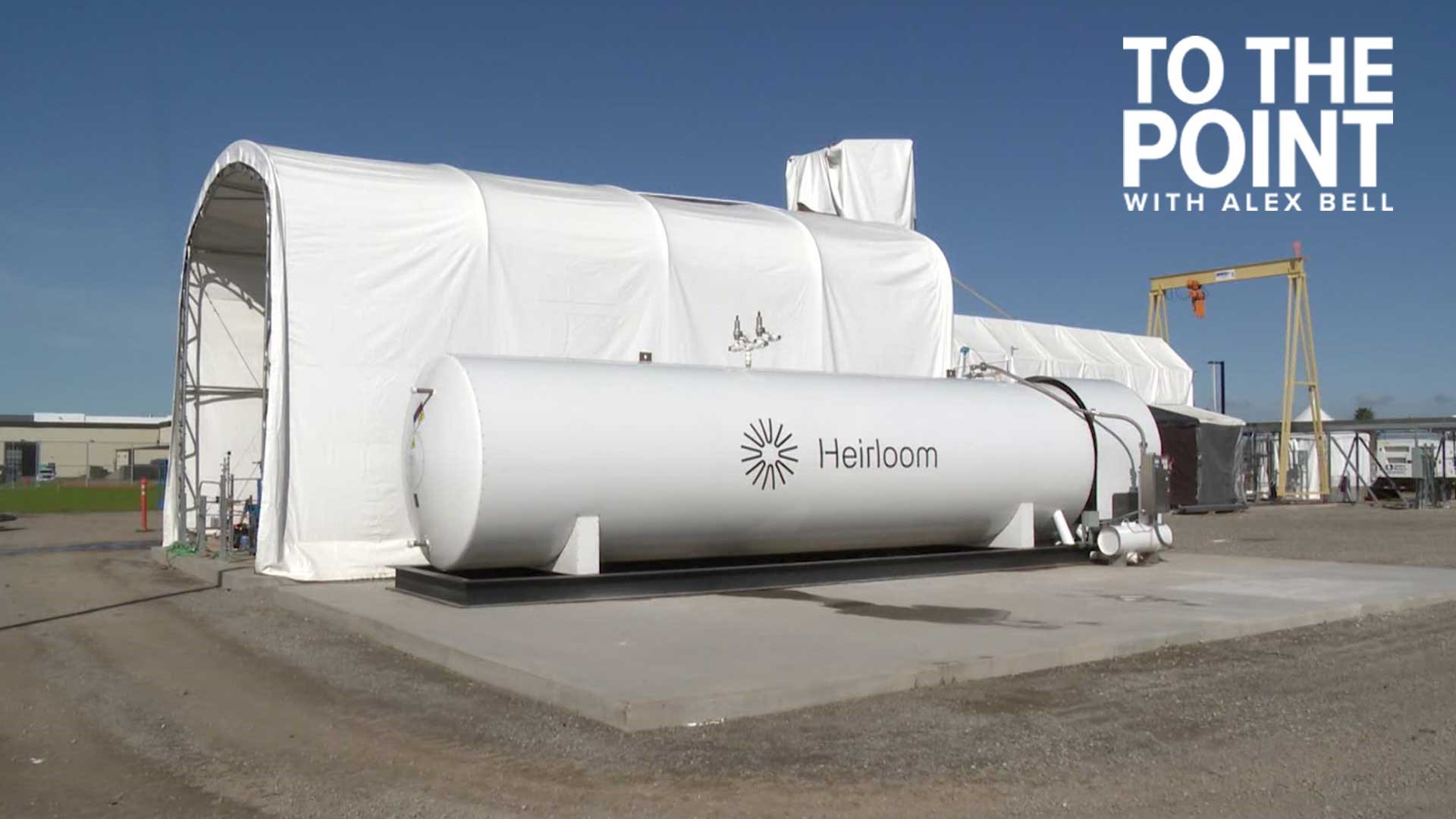TRACY, Calif. — San Joaquin County is home to a first-in-the-nation facility promising to reduce pollution by sucking it right out of the air.
“Climate change is the existential challenge and threat of our time,” said Heirloom spokesperson Christian Theuer.
Set in the flatlands of Tracy, Silicon Valley startup Heirloom launched what aims to be a gamechanger in the fight against climate change.
“This is one important solution that can get us all the way to net zero,” said Theuer.
In other words, cutting greenhouse gas emissions to as close to zero as possible. One way to do so is by taking the harmful gases out of the air and putting them elsewhere.
Heirloom says the Tracy facility can remove and store as much as 1,000 tons of carbon dioxide a year. It’s the first commercial facility of its kind in the United States.
It’s called direct air capture. The technology has been compared to a time machine with promises of turning back the clock on climate change. While it’s the first in the U.S., the International Energy Agency says there are at least 27 others around the world with another 130 in the works.
“To take carbon directly out of the air and store it permanently is an incredible opportunity and I want to see more,” said Sen. Anna Caballero (D-Merced).
When it comes to effectiveness, experts say where you put a facility like this doesn’t matter.
“CO₂ is just everywhere in the atmosphere and if you take it out in any place, it eventually reduces it everywhere,” said Tony Wexler, the director of air quality research at UC Davis.
The towers at the facility are filled with limestone, which acts like a sponge soaking up the CO₂ from the air. The CO₂ is eventually embedded into cement, which is then used in construction.
“It is a great way to be able to use something that is a waste product, essentially, that creates a enormous amount of harm, and to be able to repurpose it for some for a better use,” said U.S. Energy Secretary Jennifer Granholm.
But is it enough?
“It’s a little hard to take this project too seriously because it's so small,” said Dan Ress, the senior attorney for the Center on Race, Poverty and the Environment.
Direct air capture requires a lot of energy, but experts say if it’s done with and alongside renewable energy like solar or wind, then facilities like the one in Tracy could make a difference on a large scale.
“The only way to even arguably do this reasonably is to use renewable energy, which I will say Heirloom is doing,” said Ress.
Heirloom admits the facility is small by design.
“We’re starting small. We have a long way to go in scaling up a lot of really important solutions to the climate crisis. Direct air capture is one of them,” said Theuer.
Granholm says another similar process, carbon capture, is causing concern among critics. They say storing carbon is risky.
“Carbon pipelines are very dangerous, there's a high risk of rupture. If carbon dioxide is released in a pipeline rupture, you can be talking about dozens, hundreds of people being hurt or even killed within 20 minutes and it's unregulated,” said Ress.
Critics also worry about the long-term effects.
“Is the storage really permanent? Or is it leaking? And if it's leaking, what harm does that create? What does that do to the water? Does it leach up that stuff from the ground,” asked Ress.
And questions remain about the impacts on soil, water and potential unintended consequences.
“The main thing we need to do on climate change is eliminate the use of fossil fuels. We know how to do that, but we aren't doing it fast enough. Anything that distracts us from that goal presents a grave moral hazard. This project does exactly that… this project distracts us,” said Ress.
Some experts worry carbon capture encourages more use of fossil fuels and the creation of greenhouse gases.
“The question is sort of the end result, right? Did you actually end up removing more carbon dioxide from the atmosphere than you put into the atmosphere to make the process happen? And so, if you're using a lot of energy to do this and that energy comes from fossil fuels, you're screwing up,” said Wexler.
The goal is to have more facilities like this to continue the fight against climate change across the country.
WATCH MORE ON ABC10: Can California put chip technology in EBT cards?

















